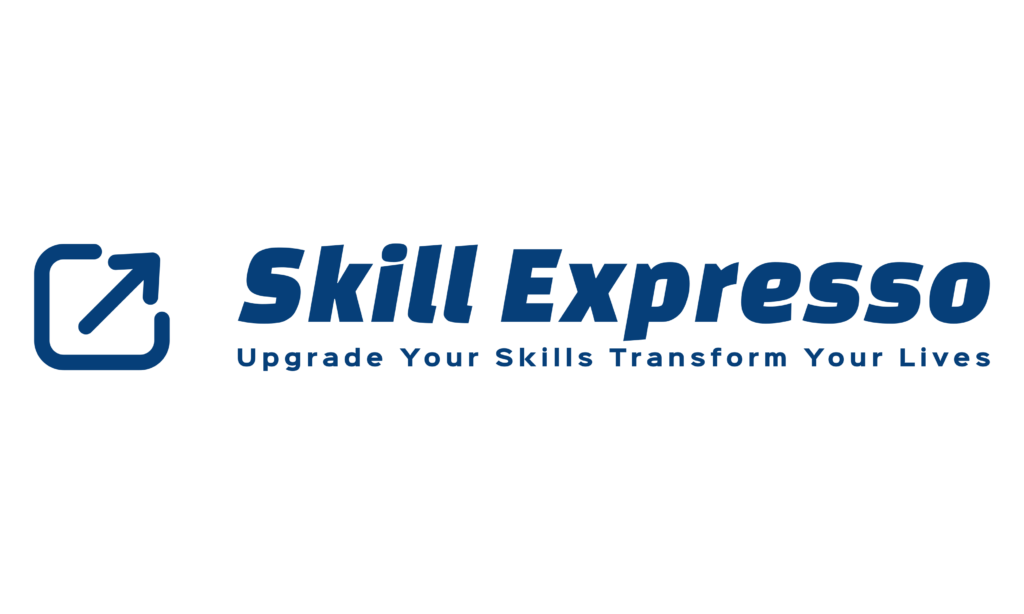Kick-start your career in Artificial Intelligence and Machine Learning
- Online Instructor Led
- 6 Months
- Career Support
Our Alumnis at :





Book a FREE live demo!
By creating an account, I have read and agree to Learncrew’s Terms & Privacy policy
Get a 360° understanding of AI
and Machine Learning
1,000+ Learners rated our program
* Get complete program structure and syllabus
- Python
- NLP
- Deep Learning
- Machine Learning
- Computer Vision
- Neural Networks
What is Included?
- 6 Months
- Skill Development
- Job Readiness
- 250+ Coding
- 40+ Articles
- Assignments
- Lifetime Access
- Certificate
Get Industry ready with Dedicated Career Support
Access to 100+ job postings every month
Live career mentorship with industry experts
Personalised Resume & Linkedin Review
Mock interviews with industry experts
Designed for working professionals like you
Comprehensive Curriculum
The curriculum has been designed by Industry Leaders and experts in the field of Artificial Intelligence and Machine Learning with decades of expertise.
Python Bootcamp for Non-Programmers
This bootcamp serves as a training module for learners with limited or no programming exposure to enable them to be at par with other learners with prior programming knowledge before the course commencement. This is an optional but open to all module. More than 1000 Learners have used this successfully to create a strong foundation of programming knowledge, needed to succeed as an AI ML professional.
Foundations
The Foundations block comprises of two courses where we get our hands dirty with Statistics and Code, head-on. These two courses set our foundations so that we sail through the rest of the journey with minimal hindrance.
This course will let us get comfortable with the Python programming language used for Artificial Intelligence and Machine Learning. We start with a high-level idea of Object-Oriented Programming and later learn the essential vocabulary(/keywords), grammar(/syntax) and sentence formation(/usable code) of this language. This course will drive you from introducing AI and ML to the core concepts using one of the most popular and advanced programming languages, Python.
- Python Basics
Python is a widely used high-level programming language and has a simple, easy-to-learn syntax that highlights readability. This module will help you drive through all the fundamentals of programming in Python, and at the end, you will execute your first Python program. - Jupyter notebook – Installation & function
You will learn to implement Python for AI and ML using Jupyter Notebook. This open-source web application allows us to create and share documents containing live code, equations, visualisations, and narrative text. - Python functions, packages and routines
Functions and Packages are used for code reusability and program modularity, respectively. This module will help you understand and implement Functions and Packages in Python for AI. - Pandas, NumPy, Matplotlib, Seaborn
This module will give you a deep understanding of exploring data sets using Pandas, NumPy, Matplotlib, and Seaborn. These are the most widely used Python libraries. - Working with data structures,arrays, vectors & data frames
Data Structures are one of the most significant concepts in any programming language. They help in the arrangement of leader-board games by ranking each player. They also help in speech and image processing for AI and ML. In this module, you will learn Data Structures like Arrays, Lists, Tuples, etc. and learn to implement Vectors and Data Frames in Python.
- Python Basics
Here we learn the terms and concepts vital to Exploratory Data Analysis and Machine Learning in general. From the very basics of taking a simple average to the advanced process of finding statistical evidence to confirm or deny conjectures and speculations, we will learn a specific set of tools required to analyze and draw actionable insights from data.
- Descriptive Statistics
The study of data analysis by describing and summarising several data sets is known as Descriptive Analysis. It can either be a sample of a region’s population or the marks achieved by 50 students. This module will help you understand Descriptive Statistics in Python for Machine Learning. - Inferential Statistics
This module will let you explore fundamental concepts of using data for estimation and assessing theories using Python. - Probability & Conditional Probability
Probability is a mathematical tool used to study randomness like the possibility of an event occurrence in a random experiment. Conditional Probability is the possibility of an event occurring given that several other events have also occurred. In this module, you will learn about Probability and Conditional Probability in Python for Machine Learning. - Probability Distributions – Types of distribution – Binomial, Poisson & Normal distribution
A statistical function reporting all the probable values that a random variable takes within a specific range is known as a Probability Distribution. This module will teach you about Probability Distributions and various types like Binomial, Poisson, and Normal Distribution in Python. - Hypothesis Testing
This module will teach you about Hypothesis Testing in Machine Learning using Python. Hypothesis Testing is a necessary procedure in Applied Statistics for doing experiments based on the observed/surveyed data.
- Descriptive Statistics
Machine Learning
The Foundations block comprises of two courses where we get our hands dirty with Statistics and Code, head-on. These two courses set our foundations so that we sail through the rest of the journey with minimal hindrance.
I am item content. Click edit button to change this text. Lorem ipsum dolor sit amet, consectetur adipiscing elit. Ut elit tellus, luctus nec ullamcorper mattis, pulvinar dapibus leo.
We learn what Unsupervised Learning algorithms are, working of the algorithms and their scope of application – Clustering and Dimensionality Reduction.
- K-means clustering
K-means clustering is a popular unsupervised learning algorithm to resolve the clustering problems in Machine Learning or Data Science. In this module, you will learn how the algorithm works and later implement it. - Hierarchical clustering
Hierarchical Clustering is an ML technique or algorithm to build a hierarchy or tree-like structure of clusters. For example, it is used to combine a list of unlabeled datasets into a cluster in the hierarchical structure. This module will teach you the working and implementation of this algorithm. - High-dimensional clustering
High-dimensional Clustering is the clustering of datasets by gathering thousands of dimensions. - Dimension Reduction-PCA
Principal Component Analysis for Dimensional Reduction is a technique to reduce the complexity of a model like eliminating the number of input variables for a predictive model to avoid overfitting. Dimension Reduction-PCA is a well-known technique in Python for ML, and you will learn everything about this method in this module.
- K-means clustering
In this Machine Learning online course, we discuss supervised standalone models’ shortcomings and learn a few techniques, such as Ensemble techniques to overcome these shortcomings.
- Decision Trees
Decision Tree is a Supervised Machine Learning algorithm used for both classification and regression problems. It is a hierarchical structure where internal nodes indicate the dataset features, branches represent the decision rules, and each leaf node indicates the result. - Random Forests
Random Forest is a popular supervised learning algorithm in machine learning. As the name indicates, it comprises several decision trees on the provided dataset’s several subsets. Then, it calculates the average for enhancing the dataset’s predictive accuracy. - Bagging
Bagging, also known as Bootstrap Aggregation, is a meta-algorithm in machine learning used for enhancing the stability and accuracy of machine learning algorithms, which are used in statistical classification and regression. - Boosting
As the name suggests, Boosting is a meta-algorithm in machine learning that converts robust classifiers from several weak classifiers. Boosting can be further classified as Gradient boosting and ADA boosting or Adaptive boosting.
- Decision Trees
Learn various concepts that will be useful in creating functional machine learning models like model selection and tuning, model performance measures, ways of regularisation, etc.
- Feature engineering
Feature engineering is transforming data from the raw state to a state where it becomes suitable for modelling. It converts the data columns into features that are better at representing a given situation in terms of clarity. Quality of the component in distinctly representing an entity impacts the model’s quality in predicting its behaviour. In this module, you will learn several steps involved in Feature Engineering. - Model selection and tuning
This module will teach you which model best suits architecture by evaluating every individual model based on the requirements. - Model performance measures
In this module, you will learn how to optimise your machine learning model’s performance using model evaluation metrics. - Regularising Linear models
In this module, you will learn the technique to avoid overfitting and increase model interpretability. - ML pipeline
This module will teach you how to automate machine learning workflows using the ML Pipeline. You can operate the ML Pipeline by enabling a series of data to be altered and linked together in a model, which can be tested and evaluated to achieve either a positive or negative result. - Bootstrap sampling
Bootstrap Sampling is a machine learning technique to estimate statistics on population by examining a dataset with replacement. - Grid search CV
Grid search CV is the process of performing hyperparameter tuning to determine the optimal values for any machine learning model. The performance of a model significantly depends on the importance of hyperparameters. Doing this process manually is a tedious task. Hence, we use GridSearchCV to automate the tuning of hyperparameters. - Randomized search CV
Randomized search CV is used to automate the tuning of hyperparameters similar to Grid search CV. Randomized search CV is provided for a random search, and Grid search CV is provided for a grid search. - K fold cross-validation
K-fold cross-validation is a way in ML to improve the holdout method. This method guarantees that our model’s score does not depend on how we picked the train and test set. The data set is divided into k number of subsets, and the holdout method is repeated k number of times.
- Feature engineering
Here, we will cover everything you need to know about SQL programming, such as DBMS, Normalization, Joins, etc.
- Introduction to DBMS
Database Management Systems (DBMS) is a software tool where you can store, edit, and organise data in your database. This module will teach you everything you need to know about DBMS.
- ER diagram
An Entity-Relationship (ER) diagram is a blueprint that portrays the relationship among entities and their attributes. This module will teach you how to make an ER diagram using several entities and their attributes.
- Schema design
Schema design is a schema diagram that specifies the name of record type, data type, and other constraints like primary key, foreign key, etc. It is a logical view of the entire database.
- Key constraints and basics of normalization
Key Constraints are used for uniquely identifying an entity within its entity set, in which you have a primary key, foreign key, etc. Normalization is one of the essential concepts in DBMS, which is used for organising data to avoid data redundancy. In this module, you will learn how and where to use all key constraints and normalization basics.
- Joins
As the name implies, a join is an operation that combines or joins data or rows from other tables based on the common fields amongst them. In this module, you will go through the types of joins and learn how to combine data.
- Subqueries involving joins and aggregations
This module will teach you how to work with subqueries/commands that involve joins and aggregations.
- Sorting
As the name suggests, Sorting is a technique to arrange the records in a specific order for a clear understanding of reported data. This module will teach you how to sort data in any hierarchy like ascending or descending, etc.
- Independent subqueries
The inner query that is independent of the outer query is known as an independent subquery. This module will teach you how to work with independent subqueries.
- Correlated subqueries
The inner query that is dependent on the outer query is known as a correlated subquery. This module will teach you how to work with correlated subqueries.
- Analytic functions
A function that determines values in a group of rows and generates a single result for every row is known as an Analytic Function.
- Set operations
The operation that combines two or more queries into a single result is called a Set Operation. In this module, you will implement various set operators like UNION, INTERSECT, etc.
- Grouping and filtering
Grouping is a feature in SQL that arranges the same values into groups using some functions like SUM, AVG, etc. Filtering is a powerful SQL technique, which is used for filtering or specifying a subset of data that matches specific criteria.
Artificial Intelligence
The next module is the Artificial Intelligence online course that will teach us from the introduction to Artificial Intelligence to taking us beyond the traditional ML into Neural Nets’ realm. We move on to training our models with Unstructured Data like Text and Images from the regular tabular data.
I am item content. Click edit button to change this text. Lorem ipsum dolor sit amet, consectetur adipiscing elit. Ut elit tellus, luctus nec ullamcorper mattis, pulvinar dapibus leo.
I am item content. Click edit button to change this text. Lorem ipsum dolor sit amet, consectetur adipiscing elit. Ut elit tellus, luctus nec ullamcorper mattis, pulvinar dapibus leo.
I am item content. Click edit button to change this text. Lorem ipsum dolor sit amet, consectetur adipiscing elit. Ut elit tellus, luctus nec ullamcorper mattis, pulvinar dapibus leo.
I am item content. Click edit button to change this text. Lorem ipsum dolor sit amet, consectetur adipiscing elit. Ut elit tellus, luctus nec ullamcorper mattis, pulvinar dapibus leo.
I am item content. Click edit button to change this text. Lorem ipsum dolor sit amet, consectetur adipiscing elit. Ut elit tellus, luctus nec ullamcorper mattis, pulvinar dapibus leo.
I am item content. Click edit button to change this text. Lorem ipsum dolor sit amet, consectetur adipiscing elit. Ut elit tellus, luctus nec ullamcorper mattis, pulvinar dapibus leo.
I am item content. Click edit button to change this text. Lorem ipsum dolor sit amet, consectetur adipiscing elit. Ut elit tellus, luctus nec ullamcorper mattis, pulvinar dapibus leo.
I am item content. Click edit button to change this text. Lorem ipsum dolor sit amet, consectetur adipiscing elit. Ut elit tellus, luctus nec ullamcorper mattis, pulvinar dapibus leo.





